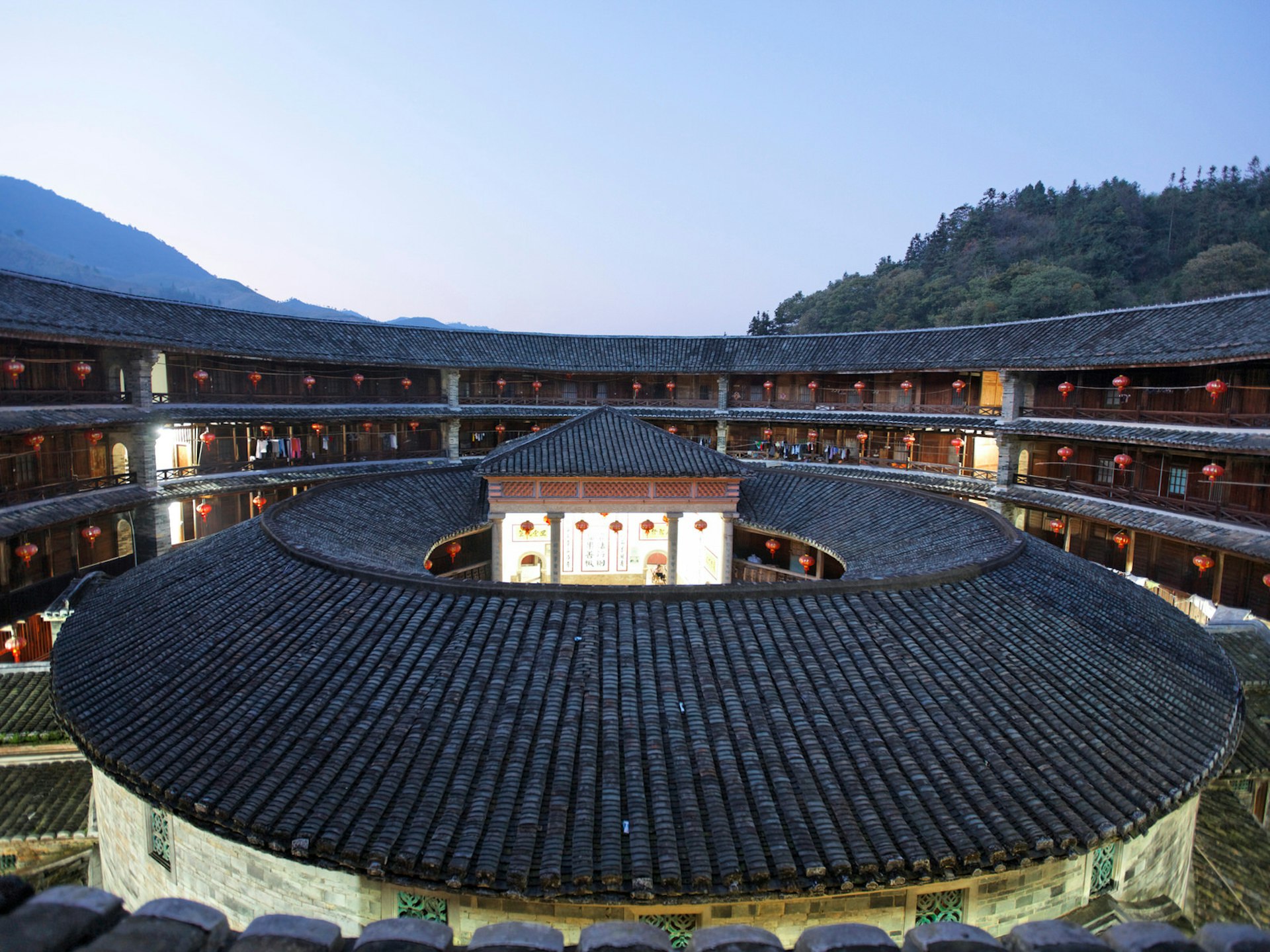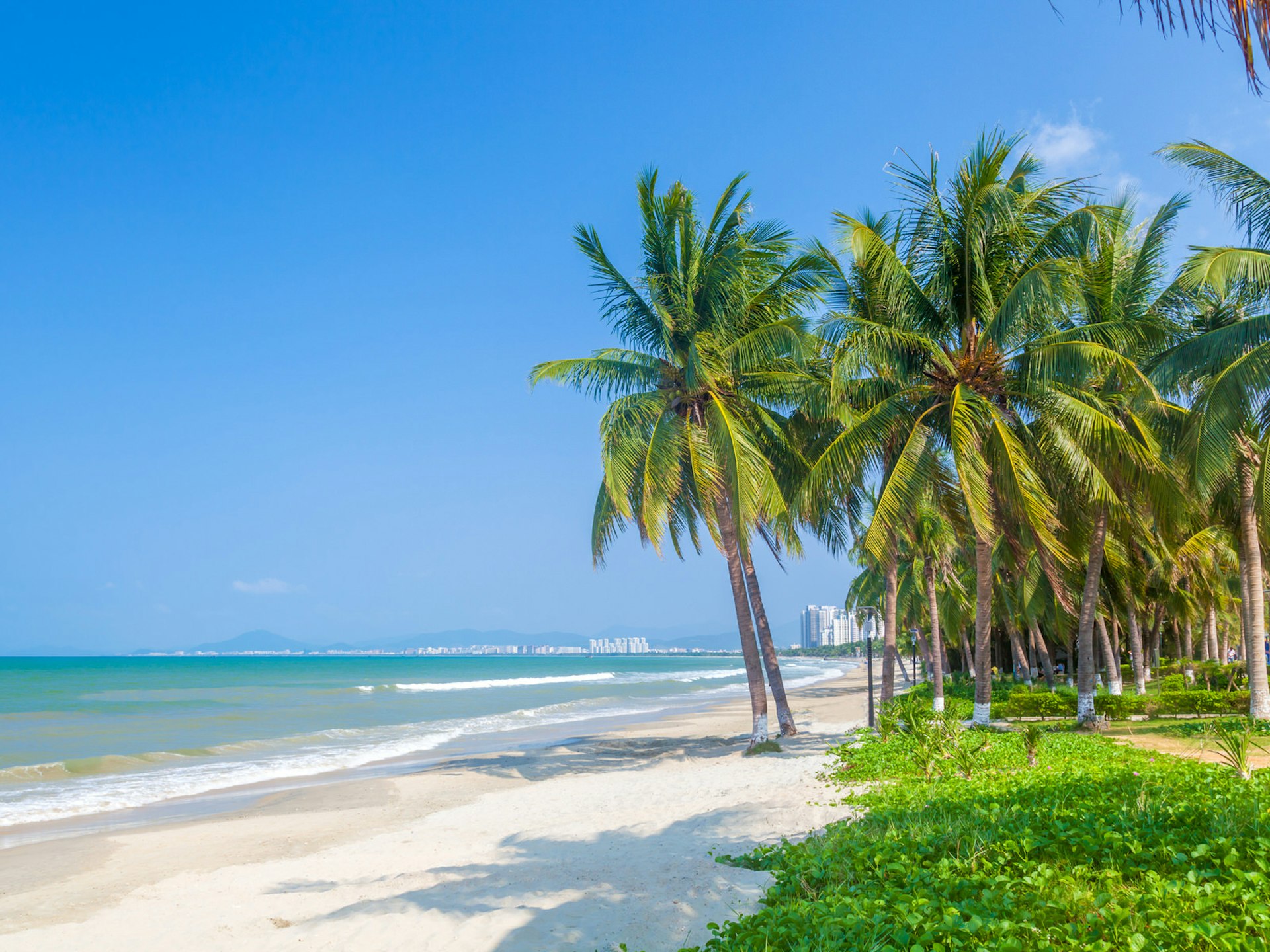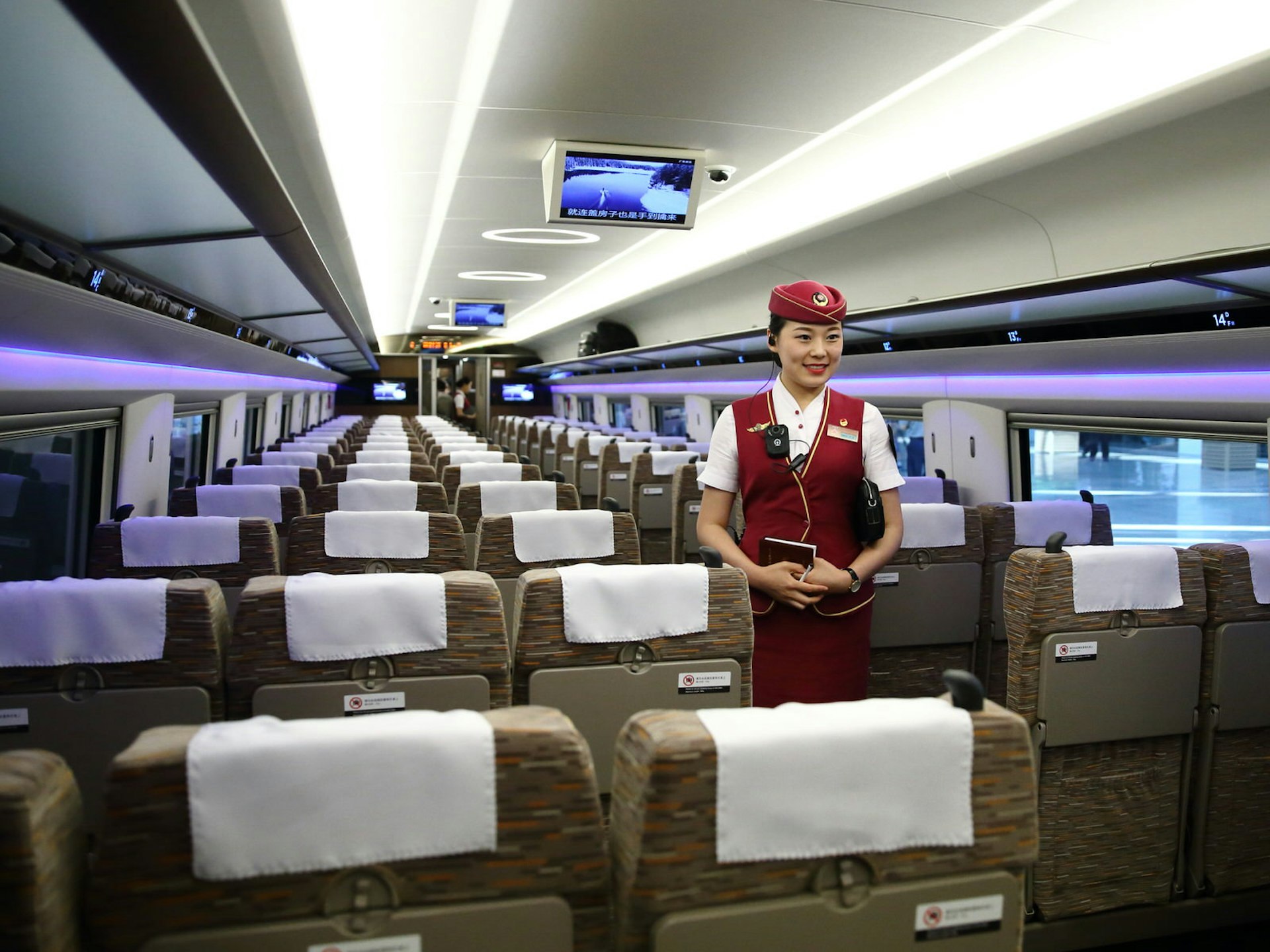It was once Japan best known for its high-speed train network, introducing the world to its Shinkansen, or bullet trains, in 1964. China holds the crown of the high-speed train capital of the world.
In the decade since China rolled out its first high-speed passenger trains, the country has built more than 22,000 kilometers of high-speed rail track to create the longest network on earth. In 2017, the country launched the world’s fastest high-speed train, called ‘Fuxing’ or ‘Harmony’, which travels at a speed of 350 km/h, cutting the travel time between Beijing and Shanghai in half. Four hours left.

Now, China’s high-speed trains – officially defined as passenger trains that travel at speeds of 250-350 km/h – take passengers to almost all provinces in the country. After Inner Mongolia’s first high-speed line opened in July 2017, only Tibet and Little Ningxia currently lack high-speed trains. But with plans for continued network expansion it won’t be long until they too are serviced by high-speed lines.
All of this makes for a very quick, and relatively inexpensive, way to cover the country’s vast distances. If you’re in the mood to explore the Middle Kingdom quickly, here are some of our picks for the most epic high-speed rail journeys in China.
The Shangri-La Train
Currently the world’s longest high-speed rail line and taking less than 11 hours to travel over 2700 km on the fastest service, the Beijing to Kunming train is truly an epic high-speed train journey.

Traveling from Beijing, China’s imperial capital, the train heads south through the heavily industrialized province of Hebei into rugged, dusty Henan, bisected by the mighty Yellow River, before Mao Zedong’s The birthplace pushes westward through Hunan into the karst landscape. From Guizhou and China’s southwesternmost province to Kunming, the capital of Yunnan. The train is named in honor of one of Greece’s most famous cities, the legendary Shangri-La, which sits high in the province’s mountainous north and will soon get its own integrated high-speed line.

To finish the trip, be sure to stop at Zhengzhou, which is within easy reach of the city of Luoyang and the nearby Longmen Grottoes, one of China’s three largest ancient Buddhist rock art galleries. Also near Zhengzhou is the Shaolin Temple, where Chinese Kung Fu is said to have originated.
The Panda Train
Taking 12 to 13 hours to travel 1690 km, this train goes from an ancient capital of China to the panda capital of the world.
Starting in Nanjing, a city with a proud and tragic history, it runs through the Yangtze Basin to the mega-city area of Chongqing, the gateway between eastern and southwestern China. From here, it pushes into the mountainous heartland of Sichuan to Chengdu, home to the world-famous giant panda breeding and research base.

En route, the train passes through Yichang. Here you can stop to catch a glimpse of the Three Gorges Dam, or take a cruise boat down the Yangtze River to Chongqing.
Silk Road Train
The first high-speed train to span China’s vast western regions connects the 1,776-kilometer distance between Ürümqi, the capital of Xinjiang Province, and Lanzhou, the capital of Gansu, in less than 12 hours. The train follows the ancient Silk Road through the oasis town of Tarpan, which is geographically the lowest point in China at 154 meters below sea level. From here, it passes through some of the harshest terrain in the entire country, Jiaoguan, home to the western end of the Great Wall, symbolically and historically symbolizing the end of the ancient Chinese empire.

It then runs southwest through the Hexi Corridor in Zhangye, worth a stop to see the otherworldly Rainbow Rocks at Danxia National Geopark, and across the Qilian Mountains, where the track climbs 3,607 meters above sea level. meters high, making it the fastest rail. Track in the world.
After slurping down some of Lanzhou’s famous hand-picked Delicious Noodles, get back on the train and travel on the newly opened Lanzhou to Xi’an line to complete your Silk Road journey by visiting the famous Terracotta Warriors Army.
Coastal Train
Covering the journey through China’s southern seaboard to the provinces of Zhejiang, Fujian and Guangdong, the 1,623-kilometer Shanghai to Hong Kong line takes about 12 hours to connect two of Asia’s most electrified megacities.

Heading south from bustling Shanghai, via Hangzhou and its beautiful West Lake, the train passes through the lush, semi-tropical coastal areas of southern Zhejiang into Fujian Province. Here, it stops at the provincial capital of Fuzhou before traveling to the old port town of Xiamen, home to some of China’s best city beaches and within reach of the Fujian Tulu (Hakka clay round house).
The train then travels along Guangdong’s mountainous southwestern border to China’s technology capital, Shenzhen, from where it’s an easy ride on the MTR to vibrant Hong Kong. There are even plans to extend high-speed rail lines directly into the city.
Ice Festival Train
China’s high-speed rail network spans the country’s economically and politically important northeast, or Dongbei as it is known in China, connects this rugged mountainous region to the rest of the country.

The train takes about 12 hours to travel the 2,400 km between Shanghai and Harbin, making it one of the longest rail journeys in China. It passes through the eastern seaboard provinces of Jiangsu – home of the giant Suzhou and its imperial gardens and canals – and Shandong, the birthplace of Confucius. En route, it stops at Tai Shan, the jumping-off point at Tai Shan, the holiest of the five sacred Taoist mountains in China.
It then winds its way along the Bohai Gulf coast, stopping at Beidaihe, one of China’s few beaches, a popular resort, before passing through Liaoning and Jilin provinces to end in Harbin. The city’s psychedelic ice sculpture festival, Harbin Ice and Snow World, is held annually in sub-zero temperatures. Dongbei January
Island Train
When it opened in 2015, it was the world’s first circular high-speed railway line, circling southern China’s tropical island of Hainan, floating between Guangdong province and northern Vietnam. Some of the line runs parallel to the island’s coastline, giving passengers stunning views of the South China Sea.

From Haikou, the island’s steamy capital, the train travels 650 kilometers around the island in about five hours, connecting all of the island’s airports. The train also passes through towns such as Wanning on the east coast of the island, providing access to some of China’s surfable beaches. For the best beaches, however, head outside the resort town of Sanya at the southernmost tip of the island.
Important Tips for High Speed Train Travel in China
- High-speed trains that travel during the day offer second and first class seats, with occasional service offering business class. While the second class seats are small, they are spacious and comfortable.
- High-speed rail services are extremely punctual, with trains leaving stations dead on advertised times. Automatic ticket barriers at stations close three minutes before the train departs so make sure you’re there on time!
- Thanks to the number stickers on the platform, you can determine where to line up for your car, and the trains stop almost at their marks. No need to run behind your car door as it passes you by when the train arrives at the station!

- All high-speed trains have excellent toilet facilities, usually with that rare commodity in China – toilet paper! For food and drink, all have boiling water taps for tea and instant noodles, most have snack carts that offer seat service, and some even have buffet cars.
- Booking train tickets outside of China is easy. Ctrip – You can deliver the tickets to the hotel or pick them up yourself when you go to the station. You will need your passport to buy or collect tickets. Make sure the passport number you enter when buying online matches your passport exactly or you will run into trouble.
